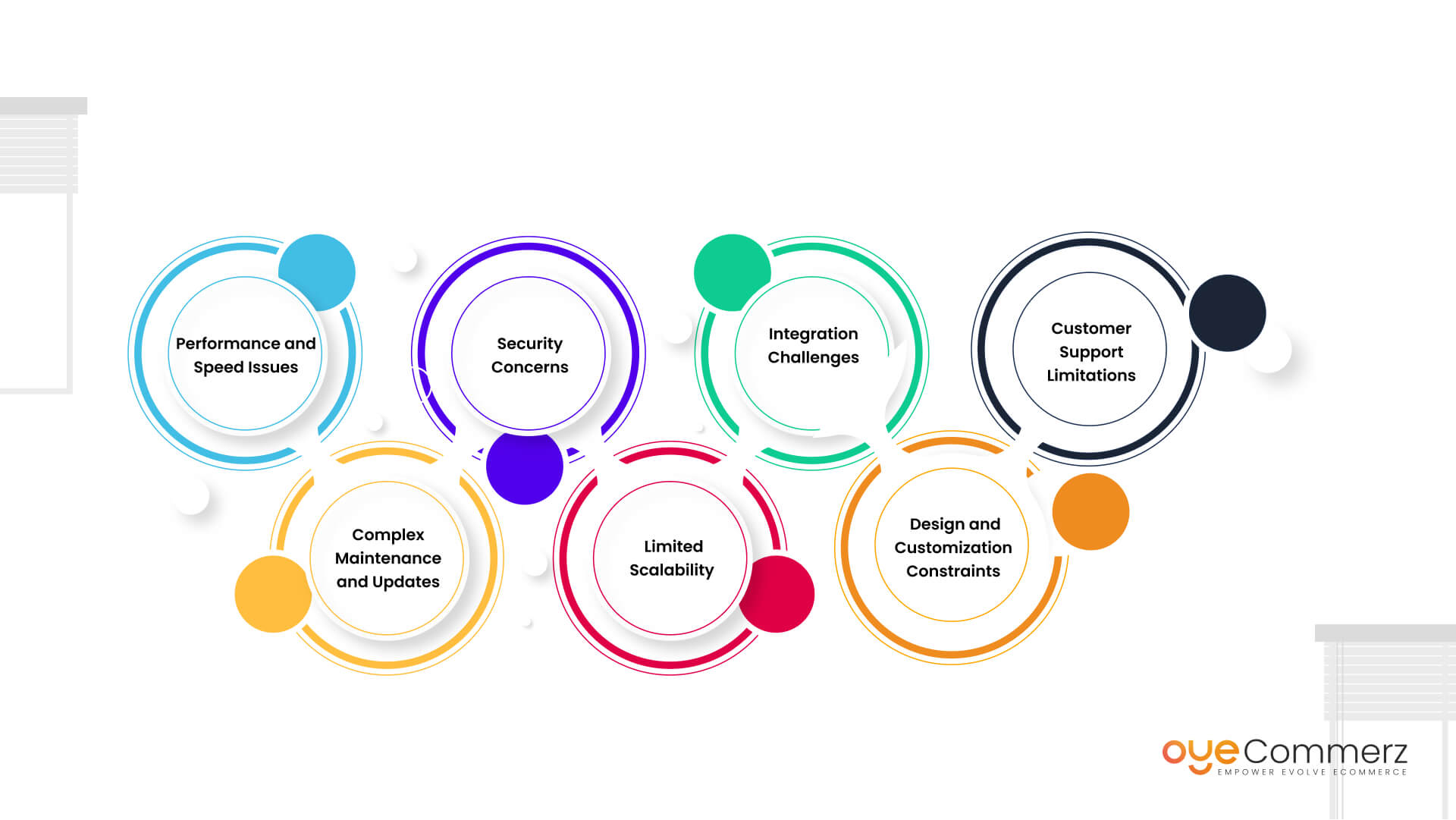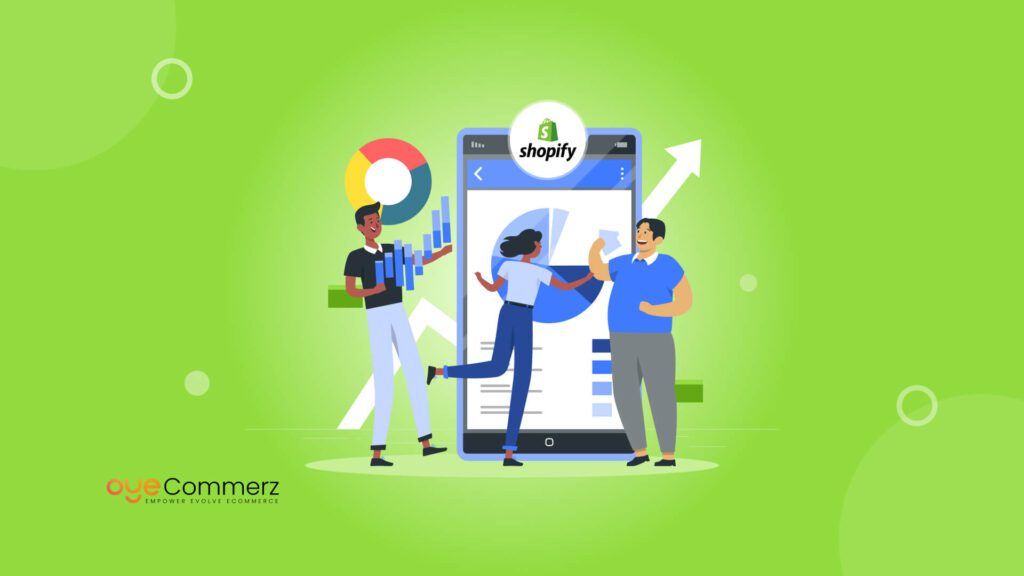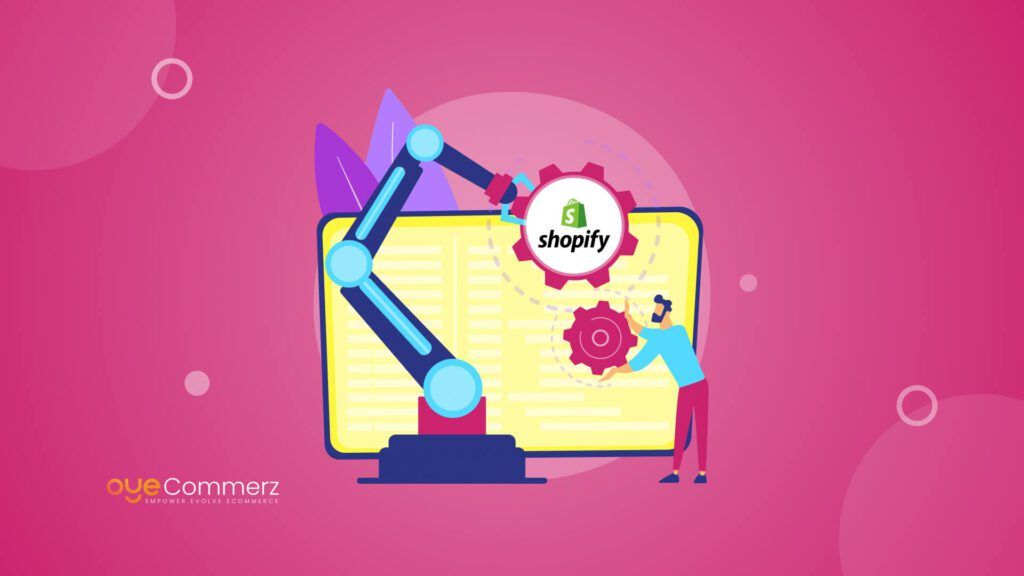E-commerce is a challenging business that requires solid performance, intuitive controls, and optimal availability. Detractors claim that WooCommerce is too complicated, but many small and medium-sized businesses prefer it due to its versatility and ability to change many aspects of it. Nevertheless, as the business expands, it becomes apparent that WooCommerce is no longer as sufficient as before in meeting those needs. That is why there is Shopify – an enormously potent e-commerce platform that allows businesses to grow with it, as well as provides users with an easy-to-master, extendable platform for selling their products online exclusively. In general, this blog post is aimed at exploring the notion of website re-platforming in general, why Shopify is a way better option and seven signs that your WooCommerce store is actually in desperate need of a re-platforming intervention.
E-Commerce Migration Trends You Should Know:
What is Website RePlatforming?
Website re-platforming refers to the process of shifting from one e-commerce platform to another for your online business. This process can from just migrating from one platform to another to a major revamp depending on the distinctiveness of the two different platforms and the changes required. The instances that may lead to re-platforming include cases where the business organization has expanded to a level where the initial platform is unable to support it, or the platform has failed with poor performance, or cases where the business wants to get improved features and support from another platform. The end benefit is to identify a platform that is closer to your requirements for your organization, optimizing your store and achieving higher efficacy and growth.
Why Shopify is the Best Option When Planning to Migrate?
Still, Shopify has established itself as one of the prominent e-commerce platforms, especially for growing businesses. Here are a few reasons why Shopify is an excellent choice for migrating your WooCommerce store:
- Ease of Use: Shopify offers a very friendly UI that can be easily navigated by people of different skills in programming. It has no complicated interface; the management of your store through its drag-and-drop feature and its user-friendly dashboard make it easy to use.
- Scalability: With the help of Shopify you can manage your business no matter if it is a small shop or an enterprise-level company. It boasts a fast and flexible architecture that lets your store scale up as a business without affecting speed.
- Comprehensive Features: The abandoned cart recovery, search engine optimization, and other apps are integrated measures that Shopping provides, including a plethora of others that will improve your store’s functionality.
- Security: Security: Since you’ll be handling sensitive customer information, Shopify includes SSL certification and PCI compliance from the start.
- Support: Customer support is available for Shopify 24/7 as well as extensive documentation gives you all the help you need on the spot.
- Integrations: Shopify supports a myriad of apps that complement the operation of your store and their integration is quite easy.
7 Signs It's Time to Migrate from WooCommerce to Shopify:

- Performance and Speed Issues:
- Perhaps, one of the most important tasks is the performance of the given online store. High loading time and usual pauses in connection with the site lead to customers’ dissatisfaction and their desire to switch to other resources. Being built on WordPress, WooCommerce implies that its performance and stability directly correspond to the chosen hosting provider and the settings of the site. One more fact you might become aware of when your store becomes more popular and has more visitors – the speed and the general work rate most likely will decrease.
- Shopify, on the other hand, is openly a hosted solution. As for the server issues, Shopify takes care of them and optimizes your store so it runs fast and doesn’t have any technical problems. Shopify is designed for processing large traffic, thus, giving the users stability and the necessary speed.
- Complex Maintenance and Updates:
- WooCommerce needs updates of the core WordPress software and the WooCommerce plugin regularly. Also, all other plugins, themes, and customization should be updated to prevent conflicts and potential security risks. It can quickly turn into a boring and rather technical endeavor the more your shop evolves and the more facets you add.
- Shopify means maintenance is easier since Shopify is in charge of updating the site and applying security patches. As a result, you do not have to worry about Do It Yourself concerning technicalities that are essential for the operations of your business. One thing that is quite comforting about the platform is that it updates automatically to the latest version with the latest features and security updates.
- Security Concerns:
- Any online store dealing in merchandise must be secured effectively against incidents like theft. WooCommerce is a self-hosted platform, and some of the aspects of security like SSL certificates payment system integration (PCI compliance), and protection against hacks and malware are on your own. This can be rather daunting especially if not quite familiar with the technical details.
- Shopify has very strong security by default coming with SSL certification, as well as complete PCI compliance. The platform is checked for possible security concerns, and being hosted, the safety of your store rests with Shopify. This frees your mind as a businessman so that instead of having to worry about the hacker penetrating your system, you can tend to the growth of your business.
- Limited Scalability:
- It should be noted that as your business evolves, WooCommerce may become a less suitable solution for you. It becomes challenging for WooCommerce which has limited capabilities to accommodate the increased product catalog, a large amount of traffic, and more complex transactions. To scale a WooCommerce store, a good amount of investment has to be made in the hardware resources or server resources and technical knowledge.
- Shopify is built with the idea that it can grow seamlessly. This can be new product lines, expansion to new regions, increased traffic and anything in between, Shopify’s architecture can accommodate all of this. The platform’s scalability gives the ability for business expansion without the concern of technical constraints to help customers have the best experience.
- Integration Challenges:
- To manage and run a successful online store, you are likely to incorporate other applications known as third-party apps in the operation of your business such as e-mail marketing, inventory, and customer relationship management. WooCommerce has many plugins, but it is confusing and challenging to implement and ‘manage them, moreover, various plugins can conflict with one another.
- Shopify performs best in integration and it has an app store where you get thousands of apps that complement your store. It has approved apps within the database about quality and compatibility when it has to do with integration. Also, the store owners can integrate Shopify with any tool or service offered by third-party applications since it offers an open API.
- Design and Customization Constraints:
- Using WooCommerce is very flexible, but it means that accessing the possibilities of the platform usually demands coding skills or the assistance of a coder. This can be a disadvantage for store owners who wish to make changes to their layout with ease and speed without really having to go into the source code of the layout.
- Shopify currently provides its users with a large selection of professionally created themes and all of these themes may be customized with an easy-to-use drag-and-drop interface. This means that one can competently come up with a good-looking and one-of-a-kind store without a single line of coding. Shopify’s design features allow your store to capture the right aesthetics and theme your store appropriately for your customers.
- Customer Support Limitations:
- This is why users often face the problem of getting stuck with their e-commerce platform not knowing where to turn to for assistance. WooCommerce support is mostly availed through forums and documentation and actual assistance provided by WooCommerce is restricted. It can thus have you default to hunting for solutions to pertinent issues at rather inconvenient times.
- Customer support is available through the phone, via email, and even live chat and these services are offered through the Shopify platform on a 24/7 basis. This depends on their efficient help desk service that ensures that you fix any problem to ensure that your store is up and running. This level of support is paramount in guaranteeing that your business moves forward it is not held back by a technical hitch.
Table of Contents
ToggleMigrate your E-Commerce Platform Now with OyeCommerze!
Welcome to OyeCommerz, your dedicated partner for WooCommerce to Shopify Migration Services. We grasp the significance of your digital transformation.We understand the transformative power of an efficient and hassle-free migration. Connect with us to elevate your online business through expert migration services and unwavering support. Your digital venture deserves nothing less than excellence.
"As your business grows, your WooCommerce store might struggle to keep up with increased traffic and transactions. Shopify is designed to scale with your business, offering a more flexible and robust solution to accommodate your expanding needs.”
Conclusion
Shifting to Shopify from Woocommerce can be a wise decision and can boost your online store significantly in terms of speed and usability, and also with the benefits of scalability. That said, if some of the characteristics highlighted above are traceable in you, then now might be the time to reevaluate and consider joining their ranks. The features of Shopify, its security systems, and helpful customer service will bring your e-business to another level. If you decide to re-platform into Shopify, you will be in a better position to address your customers’ needs, manage processes effectively, and fulfill your business objectives.
With the increasing competition among businesses, technology is the key to being at the top of the competition in the e-commerce business. Shopify provides a reliable and scalable solution that grows with your business, allowing you to focus on what you do best: offering excellent value to your consumers in terms of the quality of the products and services provided to them. It’s time to surpass the restrictions of WooCommerce — see how transitioning to Shopify will transform your store to the top.




